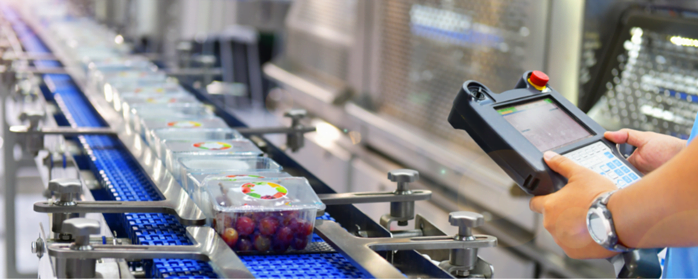Guidance from the World Health Organisation (WHO) states that COVID-19 (coronavirus) respiratory droplets can spread through contact with infected surfaces1. If cleaning is insufficient, this makes objects such as your weighing machinery highly susceptible to aiding infection. Stay safe and limit infection risk from your weighing equipment by reviewing our handy cleaning suggestions.
- Wash your hands
Follow the NHS’ guidance on thorough hand washing before and after cleaning. Hands should be washed with soap and water for 20 seconds2. Alternatively, rub hands with an alcohol-based hand sanitiser. This will help to kill infections present on your hands and stop them from spreading to objects through touch3.
- Use appropriate cleaning products
Always follow the manufacturers’ guidance on the recommended cleaning products and disinfectants. Never use harsh chemicals, which can cause corrosion of your machine.
- Apply cleaning products cautiously
Apply cleaners on to a cloth before wiping down your equipment. Do not apply cleaners directly on to equipment unless:
- Recommended by the manufacturer
- Your equipment is stainless steel or plastic and has an ingress protection rating of IP65, IP66, IP67 or IP69K. In such cases, it may be safe to apply cleaners directly subject to manufacturers’ verification.
Avoid creating splashes and spray when cleaning to prevent cross-contamination with other surfaces.
- Focus on hard-to-reach and high-touch areas
High-touch surfaces, as well as hard-to-reach areas, may harbour more invisible dangers. Special attention should be paid to cleaning areas such as edges, recesses, keypads and beneath the weighing pan. To avoid damage, always follow the manufacturers’ guidance on how to remove parts for cleaning.
To add to your efforts, our skilled engineers will thoroughly clean your machine during both UKAS and standard calibrations.
- Clean at suitable frequencies
When assessing cleaning frequency, consideration should be given to factors such as your:
- Regularity of usage
- Weighing purpose
- Working environment
- In-house, quality-management requirements.
These points should be considered alongside the surface materials of your equipment. Studies published by the New England Journal of Medicine have found that COVID-19 can persist for up to 72 hours on plastic and up to 48 hours on stainless steel4.
- Sanitise neighbouring surfaces
Remember to sanitise neighbouring areas as part of your machine cleaning process. This will prevent infection from spreading to your weighing equipment through touch and any compromises to your cleaning efforts.
Like any surface, your weighing equipment can carry invisible dangers that can spread through contact. By thoroughly cleaning your machinery, you can help to limit infection, protect users while also avoiding inaccurate weighing and prolonging the life of your equipment.
1World Health Organisation (2020) ‘Q&A on coronaviruses (COVID-19)’ [Online] Available at: https://www.who.int/news-room/q-a-detail/q-a-coronaviruses (Accessed 21 April 2020), question 4
2NHS (2020) ‘How to wash your hands’ [Online] Available at: https://www.nhs.uk/live-well/healthy-body/best-way-to-wash-your-hands/ (Accessed 21 April 2020)
3World Health Organisation (2020) ‘Q&A on coronaviruses (COVID-19)’ [Online] Available at: https://www.who.int/news-room/q-a-detail/q-a-coronaviruses (Accessed 21 April 2020), question 5
4Steafel, E. (2020) ‘How long does the coronavirus live on surfaces?’ The Telegraph, 21 April [Online] Available at: https://www.telegraph.co.uk/health-fitness/body/does-coronavirus-live-different-surfaces/ (Accessed 21 April 2020), paragraph 3





